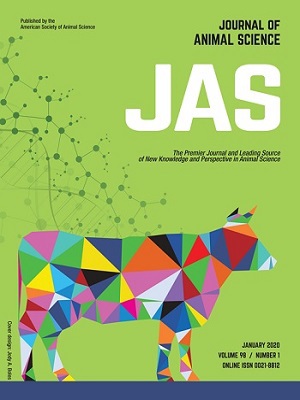Feed additive blends fed to nursery pigs challenged with Salmonella
Journal of Animal Science, 2020, 1–10

Abstract
Salmonella in pigs is a concern for human foodborne salmonellosis. Dietary fungal fermented products, coated butyrate, and organic acids (OAs) may be promising control strategies. The objectives of this study were (i) to evaluate in vitro binding affinity of Salmonella enterica serovar Typhimurium (S. Typh) and Enteritidis (S. Ent), and enterotoxigenic Escherichia coli (ETEC) F4 or F18 to mannan-rich hydrolyzed copra meal (MCM) and fermented rye (FR) with Agaricus subrufescens; and (ii) to assess MCM and FR efficacy to control in vivo S. Typh shedding when combined with OAs and compared with coated butyrate strategy. A 31-d study included 32 pigs [6.29 ± 0.76 kg BW] individually housed and distributed into four dietary treatments: control diet; OA.BU, 4 kg/t OA plus 6 kg/t coated butyrate; OA.MCM, 4 kg/t OA plus 1 kg/t MCM; and OA.FR, 4 kg/t OA plus 2 kg/t FR. All pigs were challenged for 7 d with 1 mL S. Typh (109 colony forming units daily) at 10 d postweaning. Temperature and fecal samples were collected before and after challenge, and fecal Salmonella shedding quantified. Diarrhea scores were monitored daily and growth performance was evaluated weekly. In vitro, culture with MCM and FR showed significant (P < 0.01) binding affinity for both S. Typh and S. Ent, but not for ETEC F4 and F18. In vivo, pigs fed OA.MCM and OA.FR had lower (P < 0.05) shedding and day 3 peak shedding of S. Typh after infections than pigs fed control and OA.BU diets. Pigs fed OA.FR diet tended to have an 18% increase (P = 0.068) in BW on day 14 post first inoculation compared with control and OA.BU, and 19% increased (P = 0.093) final BW at day 21 compared with control. Diarrhea frequency post infection was overall lower (P = 0.006) for OA.FR (18.9%) than OA.BU (44.8%) and OA.MCM (41.7%) while control (28.7%) was not different. In conclusion, FR and MCM show in vitro-binding affinity to Salmonella enterica serovars Typh and Ent. Feeding FR or MCM combined with OA to nursery pigs reduces the peak and averages S. Typh shedding compared with control. Fermented rye with OA tends to improve pig performance after S. Typh challenge.